Description
It’s called the ‘V8’ not only because it’s the 8th design of stereo compressor in the P38 series, but also it’s because it has 8 circuit innovations that make it special.
It’s the ‘LEGACY’ because it’s the direct descendant of Ted Fletcher’s first optical compressors dating back to the 1960s, these compressors were used universally, even on classical music where their natural sounding compression enhanced countless commercial recordings.
The LEGACY is a ‘back to basics’ compressor without the special features of the P38EX or the P38V7, it is designed to give the most honest opto-compressor sound possible when used with digital recording systems.
The LEGACY is also ‘back to basics’ on price too…… solid and hand built in the UK, but without the frills of expensive control knobs and other ‘finery’, it is affordable by the smaller studio, but with full LEGACY performance instantly recognisable as superior and more versatile than any regular compressors.
The 8 circuit features are:
- Transformer inputs; they provide total ‘ground free’ connectivity from other equipment, eliminating hum and distortion caused by ground loops. these special transformers operating in current mode give extended frequency response and eliminate transformer core distortion.
- Feedback input control makes input overload virtually impossible; you can drive 30 volts+ into the input stages without overload or distortion.
- Original optical cells as used in the first optical compressors in the 1960s, these have unique time constants that just sound right!
- Original Ted Fletcher sidechain filters as used in the early compressors to minimise low frequency ‘heaving’ and ‘breathing’ (actually, these are better than the old ones!)
- Original ‘auto control’ network so that transient sounds release faster than continuous sounds; this is one of the reasons those early compressors were so successful.
- Accurate audio and compression metering, recently developed to give better indication of state of compression, and highly responsive VU metering of overall signal level, but with built-in meter protection for when the engineer gets enthusiastic!
- Hard-wire switched by-pass gives 100% true comparison of compressed to uncompressed audio.
- Massive powerful output stages can drive audio into any load, and at any level up to near +30dB.
Why Optical Compression?
Early compressors used valves (vacuum tubes) as the gain changing device, these had poor reliability and were very prone to both ‘thumping’ of the low frequencies, and high levels of distortion, but they mostly sounded warm and nice.
Later compressors used either FETs or photoresistors. The FETs suffered from high distortion while the photoresistor or ‘optical’ types worked well but acted too slowly; they were OK for overall level control but had their limitations.
Nowadays most compressors use either Voltage Controlled Amplifiers (VCAs) or digital algorithms; these are accurate and low in noise and distortion, but it is very difficult (actually impossible) to reproduce the combination of totally natural sounding attack and decay with the variations of ratio that sound right…… and this is the main reason for returning to optical methods.
The cadmium sulfide chemical that provides the variable resistance in the optical device has very specific time characteristics when it is illuminated; careful control of timing and intensity of the light source can produce that elusive ‘reality’ and punch that is always missing from other types of compressor.
Advanced LED technology means that in the P38 series of compressors, the attack times have an extended range, and the depth of compression and release times are both natural sounding and effective.
Ted Fletcher’s very first JoeMeek compressors breathed new life into record production in 1993; they introduced a ‘weight’ and excitement to sounds, particularly in studios in New York and Los Angeles. More recently, apart from Ted’s own work with the P38, those exciting sounds have been lost; replaced by the barren dry sounds of compression designed by mathematicians.
The LEGACY re-introduces the spine-tingling power of the real originals.
Technically…
To sound right the compression ratio needs to alter with the operating level…. For example, a conventional comp set to ‘6:1’ ratio will have a set threshold, above that threshold, for an increased input of 6dB, the output will rise 1dB.
With the LEGACY, the threshold can be set and the comp ratio will increase from that point quite quickly to ‘6:1’ and it will stay at that for an increase in input of about 8dB, but then the ratio will start to reduce again until after a further 8dB the ratio will have reduced to about ‘3:1’ and will continue to reduce with additional input. This ratio change helps both to retain the sound of transients, and to sound exciting, yet perfectly natural with even very high levels of compression.
Practically…
The LEGACY is a chunky 2-U rack mount unit with the minimum of controls; It’s a real ‘plug and play’ compressor…. Easy to use, difficult to make it sound bad!
Audio Demonstration
As a very ‘telling’ demo of the Legacy, I am presenting two recordings of dynamic classical music. The first is the original track; a short excerpt of a symphony orchestra, beautifully recorded using a ‘dummy head’ recording system.
{{audio1}}
The second track is the same excerpt, but compressed with the P38V8 Legacy.
{{audio2}}
The overall gain has been increased by several dB, but the feel of the dynamics has been completely retained; the slight ‘warming’ and general excitement of the sound is the only obvious effect, yet the increase in average volume level is significant.
The settings on the compressor were:
Ratio …. 3:1, Attack Time …. 2mS, Release Time 1.5 seconds (automatic transient release).
The demo clearly illustrates the natural profiles of TFPRO optical compression producing sounds that we like to hear.
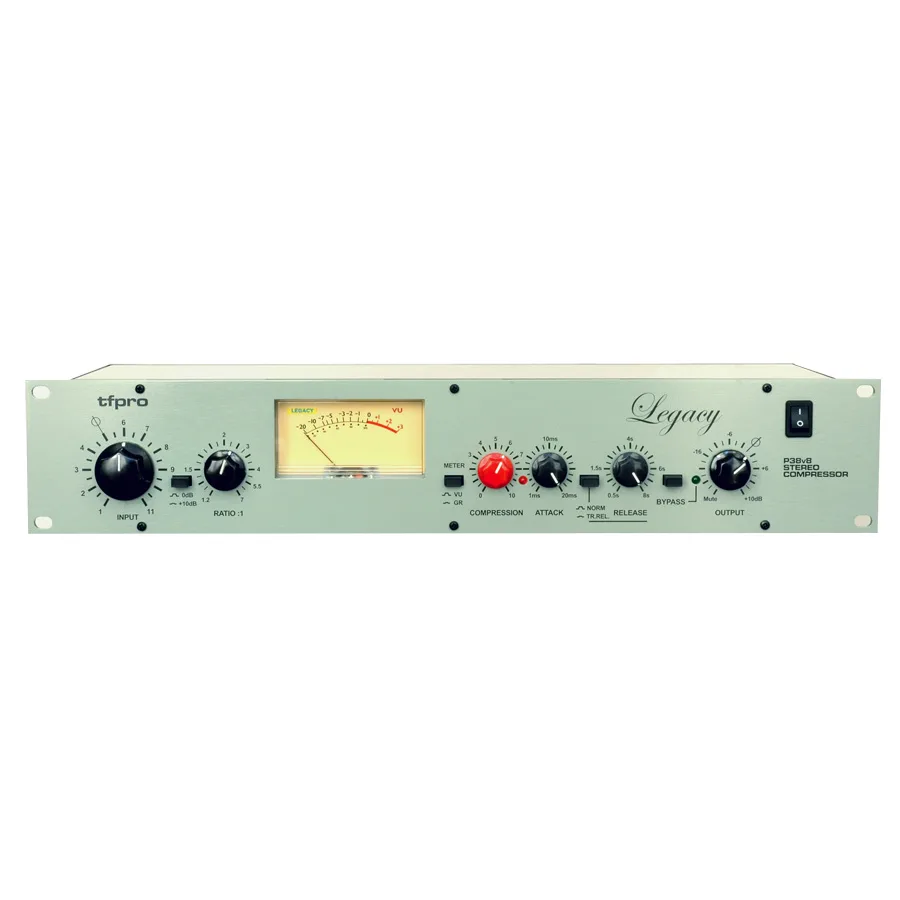
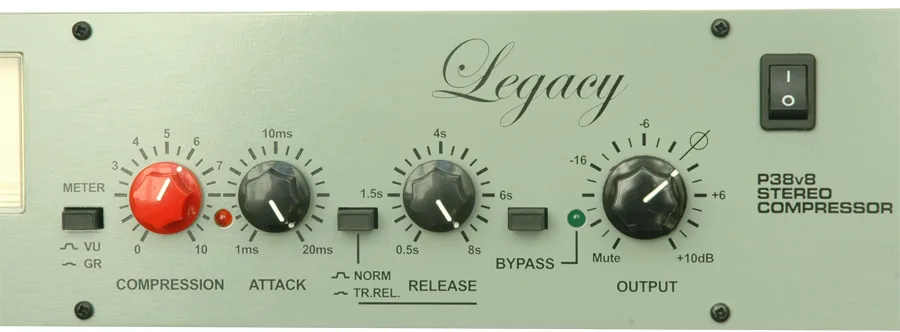

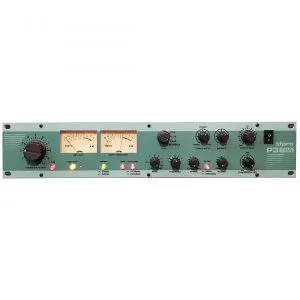
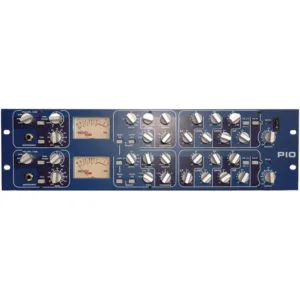
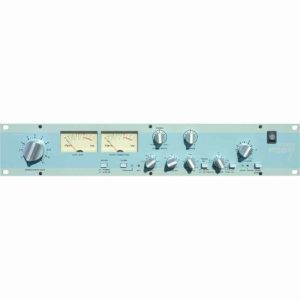
Reviews
There are no reviews yet.